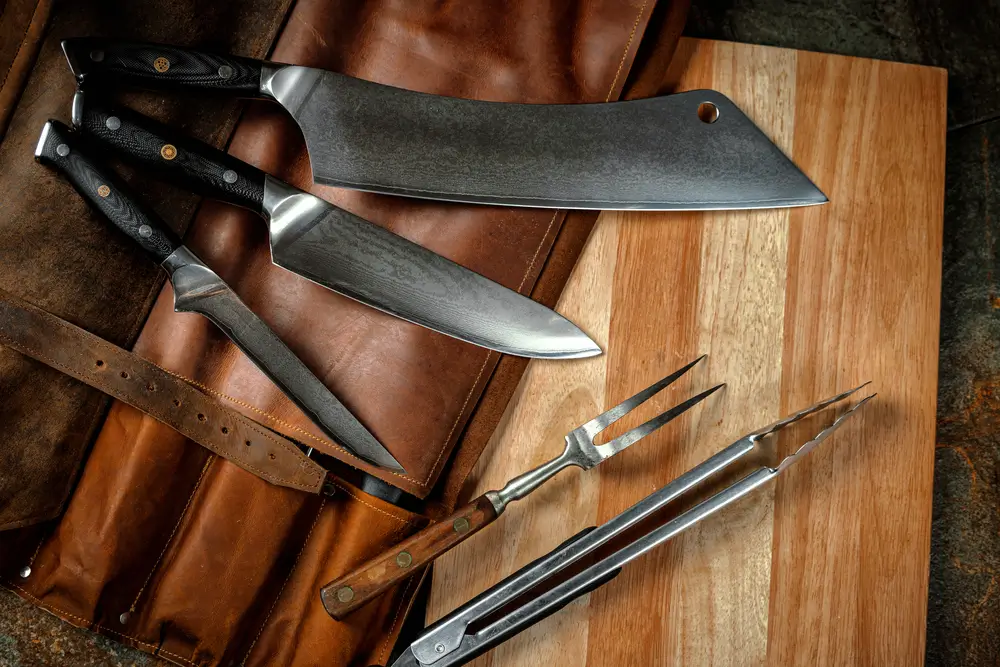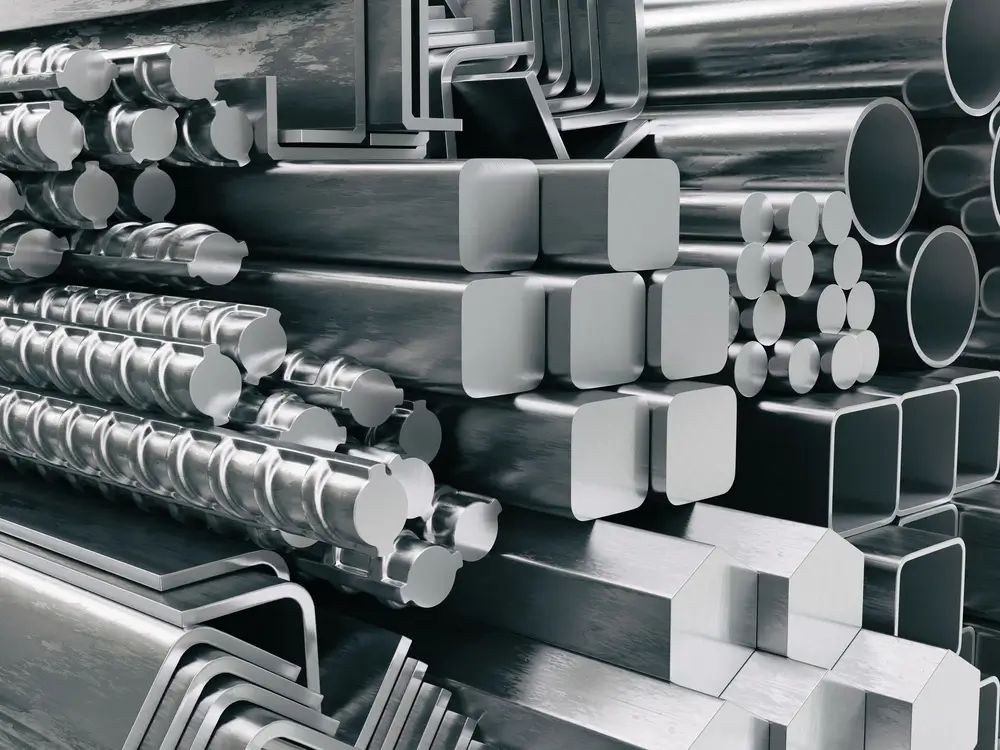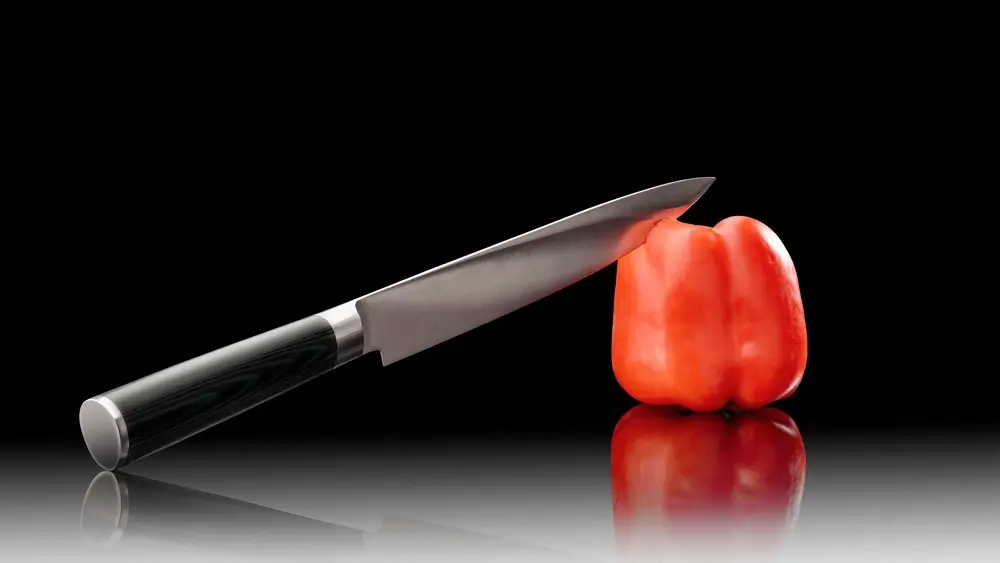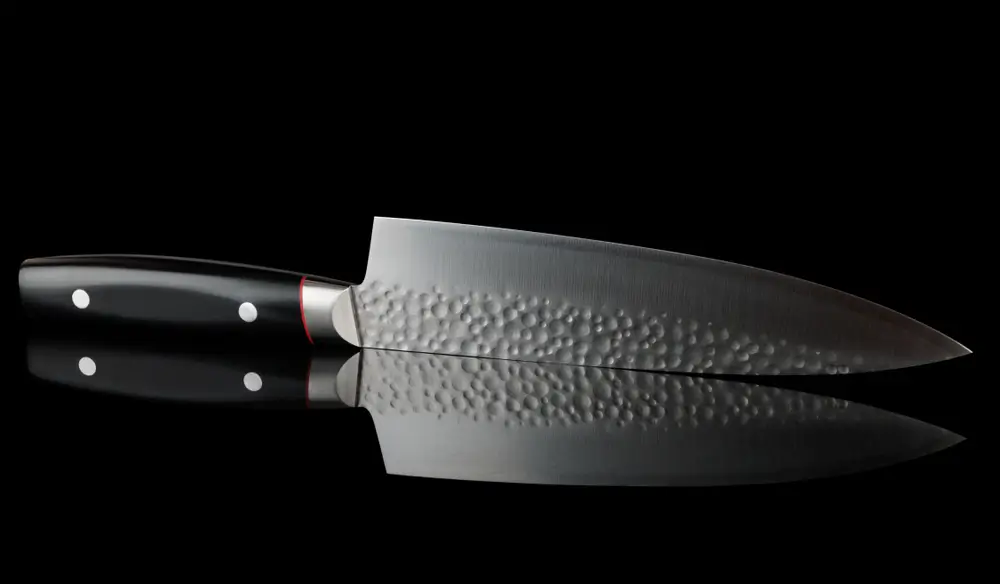The Japanese steel industry has an extensive history. Most real Japanese knives are produced from Japanese steel, which imparts certain qualities to the blades. What are some things people have to say about Japanese Steel? Steel is made using iron ore from an isolated area in Japan mixed with carbon at smelting. Japan steel is hardened with high HC values, giving it greater sharpness and longer edge durability.
When it comes to kitchen knives, there are a lot of choices out there. In this article, we’ll be looking at the different types of Japanese knife steel types and what makes them unique. We’ll also discuss each of the Japanese steel types in detail. So whether you’re in the market for a new chef’s knife or just curious about the topic, read on!
Complete Definition of Steel
Steel is an alloy made of iron and carbon, and sometimes other elements such as chromium, manganese, molybdenum, or vanadium. The carbon content in steel determines its hardness and toughness. Generally speaking, the higher the carbon content, the harder the steel will be. However, if the carbon content is too high, the steel will become brittle and can shatter under stress.
Steel alloys are designated by a two-letter code that specifies both their chemical composition and their heat treatment. For example, “AISI 1095” is an alloy containing 0.95% carbon that has been quenched (i.e., rapidly cooled) in oil and then tempered at a lower temperature.
The first letter of the code indicates whether the alloy is ferrous (iron-based) or non-ferrous: “AISI” stands for American Iron and Steel Institute. The second letter indicates the specific alloying elements present in significant quantities.
Elements of Steel

While there are many different types of steel, they all contain certain key elements. These include carbon, chromium, manganese, molybdenum, silicon, and vanadium. The carbon content is what gives the steel its hardness and toughness. The other elements can also affect the properties of steel, as we’ll see in the section on stainless steel types.
Overall All Japanese Knife Steel Types Table
The table below shows the most common types of Japanese steel and their elemental composition.
| Steel Type | Carbon | Chromium | Manganese | Molybdenum | Silicon | Vanadium |
| Aogami Super Steel | 1.2-1.6% | 0.5% | 0.4-0.8% | N/A | 0.4-0.8% | N/A |
| Aogami/Blue Steel 1 | 1.2 – 1.4% | 0.4% | 0.4-0.8% | N/A | 0.4-0.8% | N/A |
| Blue Steel #2 | 1.0 – 1.2% | 0.6% | 0.4-0.6% | N/A | 0.4-0.8% | N/A |
| Carbon Steel | 0.5 – 2.1% | 10% | 0.4 – 1.2% | N/A | N/A | N/A |
| Sihrogami/White Steel #1 | 0.6 – 0.9% | 0.2 – 0.5% | 0.4-0.8% | N/A | 0.4-0.8% | N/A |
| White Steel #2 | 0.8 – 1.1% | 0.2 – 0.5% | 0.4-0.8% | N/A | 0.4-0.8% | N/A |
| VG10 Steel | 1 – 1.1% | 14 – 15% | 0.5 – 0.75% | 1.0 – 1.2% | N/A | N/A |
| Gingami #3 Steel | 0.6 – 0.9% | 13 – 14% | 0.4-0.8% | N/A | 0.4-0.8% | N/A |
| AUS10A Steel | 1.1% | 13% | 0.5 – 0.6% | N/A | N/A | N/A |
| 440-A Steel | 1 – 1.15% | 17% | 1% | 0.8% | 1% | N/A |
| Powdered SPG2 Steel | 1.3% | 15% | 1.0 – 1.4% | N/A | N/A | N/A |
| Powdered R2 Steel | 1.45% | 16% | 0.35% | 3.30% | N/A | 2.20% |
However, Japanese steel is mainly classified as stainless steel and carbon steel. All other steels come under these two branches of knives.
What is Stainless Steel?

Stainless steel is an alloy that contains at least 10.5% chromium. The chromium gives the steel its corrosion-resistant properties. Stainless steel also contains other elements such as carbon, manganese, silicon, and nickel. The addition of these elements can change the mechanical properties of the steel. For example, adding more carbon makes the steel harder but less ductile.
What is Carbon Steel?
Carbon steel is an alloy of iron and carbon, and it is one of the most commonly used materials in the world. Carbon steel is widely used in a variety of applications, from automotive parts to construction materials. Its versatility, strength, and relatively low cost make it an ideal material for many different applications like the most popular one: Japanese carbon steel knives.
Stainless Steel Types
There are many different types of stainless steel, and each has its own unique properties.
Gingami #3:
This type of stainless steel is made with 13% chromium and is similar to carbon steel, but does not rust. It has a hardness of around 61 HRC and is a good choice for knives.
What is Japanese VG-10 steel?
This type of stainless steel is hard (HRC of 61) and sharp, has abrasion resistance and is difficult to chip. It also doesn’t rust easily.
Powdered SPG2 steel:
This type of stainless steel is made with 62 HRC and is rust resistant. It is hard to sharpen and has a high content of carbon, chromium, tungsten, molybdenum, and vanadium.
Powdered R2:
This type of stainless steel is almost the same as powdered SPG3 steel, but it is manufactured by Kobe Steel LTD. It is rust-resistant and high-grade steel.
Carbon Steel Types
Aogami (Blue) super steel
Aogami super steel is Japan’s highest quality carbon steel. It is extremely hard and is used in high-quality knives such as Santoku and Gyuto. Because of its hardness, it can hold a sharp edge for a long time.
Blue Steel #1
Aogami, or Blue #1 steel, is a type of high-carbon tool steel. It is known for its excellent edge retention and toughness, making it a popular choice for knives and other cutting tools. Aogami steel is produced by adding chromium and tungsten to traditional tool steel recipes. This gives the steel greater wear resistance and hardness, while still maintaining good toughness.
Aogami steel is often used in combination with other steel to create Damascus steel. When forge-welded together, the different steels create a layered pattern that is both visually stunning and functional. The hard Aogami core helps to improve the edge retention of the finished knife, while the softer outer layers help to protect the edge from chipping.
Tamahagane Steel
Tamahagane steel is a type of traditional Japanese steel that has been used for centuries to create some of the country’s most iconic swords and knives. The steel is made from a special type of iron sand that is found in only a few places in Japan. The sand is smelted in a furnace that is stoked with charcoal, and the resulting steel is then shaped and tempered through a variety of methods. Today, tamahagane steel knife is still prized for its beauty and strength, and it continues to be used by master craftsmen to create high-quality knives and swords.
White Steel # 1 Or Shirogami Steel
Shirogami(White) #1 steel is a type of carbon steel typically used for knives and other cutting tools. It is highly pure, with few impurities, and contains a high amount of carbon. This makes it extremely hard and durable, ideal for use in knives and other cutting tools. However, the high carbon content also makes the steel somewhat difficult to work with, and it can be brittle if not properly heat treated. Overall, Shirogami(White) #1 steel is an excellent choice for knives and other cutting tools due to its hardness and durability.
What is Yasugi Steel?
Yasugi Steel is a type of steel that was developed in Japan. It is known for its strength and durability, as well as its resistance to corrosion. Yasugi Steel is often used in the construction of bridges and other structures that require high levels of strength and durability.
Steel is made by combining iron with other metals, such as chromium, manganese, and silicon. This combination creates steel that is both strong and resistant to corrosion. In addition, the steel is also heat-treated, which further increases its strength and durability. As a result of these properties, Yasugi Steel is an ideal choice for use in a variety of applications.
Best Steel For Japanese Knives

Japanese knives are known for their sharpness and durability, and they are a popular choice among both professional chefs and home cooks. While there are many different types of steel used in knife making, some steels are better suited for Japanese knives than others. For example, carbon steel is often used in traditional Japanese knives because it can be sharpened to a very fine edge.
However, carbon steel can also be susceptible to rust and wear over time. Stainless steels are another popular option for Japanese knives, as they are less likely to rust and easier to care for. However, stainless steels are not as easy to sharpen to a very fine edge. Ultimately, the best steel for Japanese knives depends on the intended use of the knife and the preferences of the user.
Molybdenum steel vs VG10 steel: which is better?
Molybdenum steel is known for being very hard, making it an ideal choice for knives that will be used for chopping and slicing. It is also less likely to rust than other types of steel. However, molybdenum steel can be difficult to sharpen, and it may chip more easily than VG10 steel.
VG10 steel, on the other hand, is softer than molybdenum steel but harder than most other types of stainless steel. This makes it a good choice for knives that will be used for slicing and dicing. VG10 steel is also easier to sharpen than molybdenum steel and is less likely to chip. However, it may not be as durable as molybdenum steel in terms of resistance to wear and tear.
Is Japanese steel good for knives?
Yes, Japanese steel is often chosen for knives because of its durability and ability to take a sharp edge. However, there are different types of Japanese steel, so it’s important to choose the right type of steel for the knife’s intended use. For instance, carbon steels are good for sharpness, while stainless steel is rust-resistant.
Is Japanese steel good quality?
Japanese steel is known for its quality and is often used in knives and other cutting tools. The steel is made through a process of combining iron and carbon, which makes it strong and durable. It’s no wonder that Japanese steel is so highly regarded!
Conclusion | Japanese Knife Metal Types
There are a few Japanese knife steel types, each with its own set of benefits and drawbacks. The most common types of Japanese knife steel include carbon steel, stainless steel, and Yasugi steel.
Carbon steel is known for its sharpness and durability, but it can also be brittle if not properly heat treated. Stainless steel is less likely to rust and easier to care for, but it is not as easy to sharpen to a very fine edge. Yasugi steel is known for its strength and durability, as well as its resistance to corrosion. Ultimately, the best steel for Japanese knives depends on the intended use of the knife and the preferences of the user.
Hope this article helped you learn about the different types of Japanese knife steel. If you have any questions, feel free to leave a comment below!
FAQs | Japanese Steel Types
What is the hardest Japanese steel?
The hardest Japanese steel is White steel # 1 because of the high carbon contents that give it an HRC of around 63.
What is Japan’s rarest steel?
Japan’s rarest steel is Tamahagne steel, which is only found in a few sword smiths.
Is VG10 hard to sharpen?
VG10 is premium steel and easier to sharpen than most stainless steel. It can take a very sharp edge within a few minutes.
Japanese super steel knife, extraordinary performance, and edge retention
Every component of this knife feels well-designed, from the materials used to the finish.

